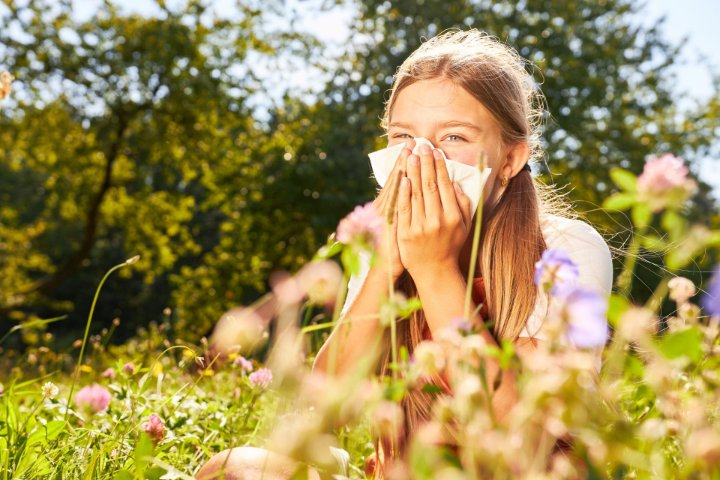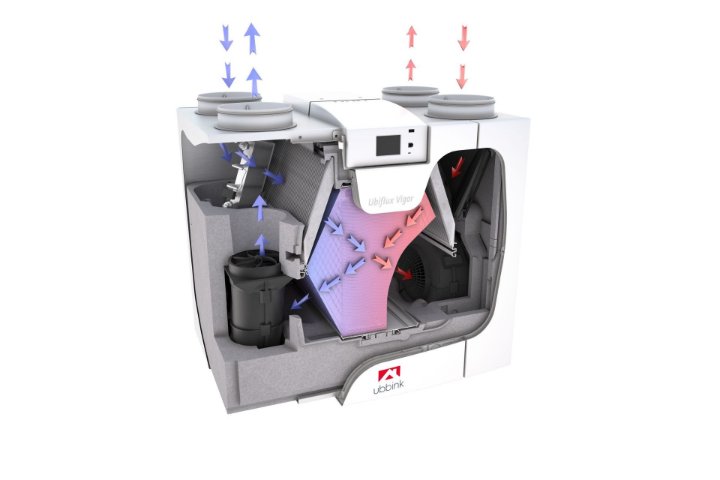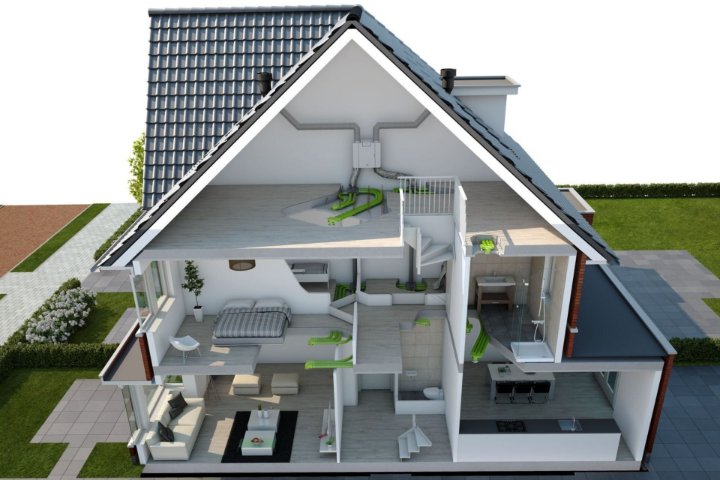
Allergies and home ventilation
While many of us eagerly await the arrival of spring and summer, these seasons also bring an unwelcome guest: pollen allergies. The air we breathe—both outside and inside our homes—plays a major role in triggering allergic reactions. It's not just outdoor pollution that affects us; stale, poorly ventilated indoor air can be just as harmful.
Fortunately, there are simple yet effective ways to improve indoor air quality and reduce allergy symptoms. Proper ventilation is key to creating a healthier living environment, helping to prevent asthma flare-ups, sneezing, and itchy eyes.
- 1 million children in the UK are receiving treatment for asthma.
- Less than 25% of children with asthma have a personalised asthma action plan (PAAP).
- Nearly half have had an asthma attack in the previous year.
- 30% have had daytime symptoms in the previous week.
How Everyday Indoor Habits Affect Air Quality and Allergies
Everyday activities such as cooking, cleaning, burning candles, or using incense can significantly impact the air quality inside our homes. Given that we spend around 90% of our time indoors, maintaining clean and healthy indoor air is more important than ever.
Poor indoor air quality, often filled with allergens like dust mites, mould, and pollen, can intensify allergy symptoms, especially for sensitive individuals. This makes air quality a critical factor in effectively managing allergies.
Mould, for example, is a common indoor allergen. These fungi typically appear as cotton-like tufts and reproduce by releasing microscopic spores, ranging from 2 to 100 micrometres in size. Spores become airborne either naturally or when mold is disturbed. Some moulds also produce mycotoxins—irritating substances that can affect both allergic and non-allergic individuals, triggering respiratory discomfort and other health issues.
Spores, mycotoxins, and similar airborne particles can lead to respiratory irritation, making proper ventilation essential. A high-performance ventilation system helps remove these harmful contaminants, maintains consistent air circulation, and creates a healthier indoor environment that supports respiratory well-being.

How Proper Ventilation Can Help with Allergies and Asthma
Good ventilation is essential for maintaining healthy indoor air—and it does much more than just circulate air. It helps prevent the buildup of damp and mould, which are known triggers for asthma and allergies.
Effective ventilation ensures consistent airflow throughout your home, removing excess moisture from the air. This helps prevent the formation of damp areas and inhibits the growth of mould—an environment where dust mites thrive. By eliminating these conditions, ventilation directly contributes to a healthier indoor space, particularly for those with asthma or respiratory sensitivities.
Poor indoor air quality can worsen symptoms in individuals who already have asthma and may even contribute to its development in more vulnerable groups, such as young children. Some people with asthma are also more sensitive to specific indoor triggers, making air quality management even more crucial.
A Ubbink Mechanical Ventilation with Heat Recovery (MVHR) system is an excellent solution for improving indoor air quality. These systems work by filtering incoming air to remove pollutants, insects, and allergens, while also warming and continuously circulating fresh, clean air throughout the home.
During allergy season, MVHR systems offer additional benefits:
Advanced Filtration: MVHR units are equipped with filters that capture airborne allergens, such as pollen and dust. This prevents them from entering your living space and helps reduce their concentration indoors.
Consistent Fresh Air Supply: By continuously replacing stale air with filtered, pre-warmed air, MVHR systems maintain a comfortable and healthy indoor environment year-round.
To ensure optimal performance, it’s important to regularly maintain your MVHR system—this includes cleaning or replacing filters as recommended. With proper care, MVHR systems provide a highly effective way to manage indoor air quality, particularly during peak allergy seasons.


5 Key Benefits of Mechanical Ventilation with Heat Recovery (MVHR)
Improved Air Quality
In the wake of the COVID-19 pandemic, indoor air quality has become a top priority. MVHR systems continuously supply fresh, filtered air while extracting stale air, helping to reduce airborne pollutants, allergens, and contaminants—creating a healthier indoor environment for everyone.Efficient Heat Recovery
One of the standout advantages of MVHR is its ability to recover up to 90% of the heat from outgoing air. This recovered heat is then used to warm the incoming fresh air, significantly reducing the energy required to maintain a comfortable indoor temperature.Lower Energy Bills
As energy prices rise and households look for more sustainable solutions, MVHR systems offer a practical answer. By recovering heat that would otherwise be lost and operating more efficiently than traditional ventilation or heating methods, MVHR systems can lead to noticeable savings on energy costs.Consistent Indoor Comfort
Whether it’s the middle of winter or peak summer, an MVHR system helps maintain stable and comfortable indoor temperatures year-round. It reduces temperature fluctuations and helps eliminate stuffy or overly humid conditions, improving overall comfort in homes and workplaces.No Need to Open Windows
With an MVHR system in place, there’s no need to rely on opening windows to ventilate your home. This not only enhances security and reduces noise from outside but also prevents unfiltered air—and the allergens and pollutants it carries—from entering your indoor space.

Complete your system
Discover our total solutions!
We offer comprehensive solutions for residential ventilation, a unique specialty we take great pride in!
A complete Ubbink ventilation system comprises five components, from the ventilation unit to the finishing valve:
- Ubiflux heat recovery units: Extremely compact ventilation units for wall or ceiling installation.
- Air Excellent air distribution system: Flexible and modular.
- Aerfoam insulated pipe system.
- Roof Terminals: Suitable for flat and sloping roofs, both insulated and non-insulated.
- Haelix supply and discharge valves: Available in round and square designs.
From our unique position, we provide quick, accurate, and reliable advice on our ventilation systems, all from the comfort of your home.
Have an upcoming project and need a complete solution from design to delivery? Explore our MVHR Solutions!


